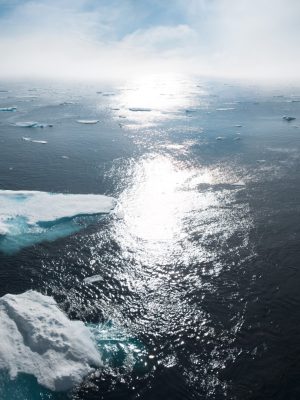what is global pollution?
Global pollution refers to environmental issues where pollutants spread and accumulate on a global scale, posing universal threats to the Earth's ecosystem, human health, and sustainable development. Its essence lies in the fact that harmful substances released into the natural environment by human activities (such as industrial production, resource development, and transportation) exceed the self-purification capacity of the ecosystem, thereby breaking through regional boundaries and forming cross-border and cross-sphere pollution effects.
why global pollution is significant
It poses fundamental threats to the Earth's ecology, human survival, and global sustainable development, with its impacts spanning national borders, eras, and species.


Sharp Decline in Biodiversity: Pollution damages habitats, with over 1 million species worldwide now endangered due to contamination. The disruption of ecological chains can trigger a “butterfly effect”—for example, the reduction of bees due to pesticide pollution could lead to 70% of crops failing to be pollinated, threatening global food production.
Imbalance in Natural Cycles: Air pollution alters climates, causing frequent extreme weather events. Soil pollution weakens its purification capacity, exacerbating soil erosion and desertification. Globally, about 24 billion tons of topsoil are lost each year, equivalent to the disappearance of 30 football fields of farmland every minute.
More than 2 billion people worldwide lack safe drinking water, and approximately 500,000 people die each year from diseases like diarrhea and cholera due to consuming contaminated water. Additionally, data from the World Health Organization (WHO) shows that 99% of the global population breathes air with 超标 (excessive) PM2.5 levels, with around 7 million people dying prematurely each year from air pollution—equivalent to one death every 4 seconds. This has led to a significant increase in the incidence of lung cancer and cardiovascular diseases.
From a historical perspective, pollution issues have transcended the environmental realm. The decline of the Mayan civilization is believed to be linked to agricultural collapse caused by deforestation and soil degradation. Today, if pollution persists, it may breach the “tipping points” of the Earth’s ecological carrying capacity—for example, if ocean acidification exceeds pH 7.8, it will lead to the extinction of shellfish and the collapse of marine food chains—thus stripping human civilization of its natural foundation for survival.
THREE CATEGORIES OF POLLUTION
Water Pollution
Sed ut perspiciatis unde omnis iste natus error sit voluptatem accusantium rem aperiam, eaque ipsa.
Air Pollution
Ves 90% id Intrepido ditiones testes ad odio, facer cubiculo ante nunc id cum hac magni p iactura in est vero unanimi.
Land Pollution
Rem et publicissime quod mirum typi facer eaque tui authentica accusantium eum regibus, magna quis.
POSSIBLE SOLUTIONS
For Individuals
Water Conservation:
- Turn off faucets tightly after use.
- Use rice-washing water and vegetable-washing water to water plants or flush toilets.
Low-Carbon Emission Reduction:
- Prioritize public transport, subways, shared bikes, or walk for short distances instead of driving.
Prevent Soil Pollution:
- Do not discard hazardous waste like used batteries, paint cans, or pesticide bottles randomly. Sort and dispose of them at the community “hazardous waste” collection points.
Waste Sorting and Recycling:
- Sort household waste. Sell recyclables to recycling stations to avoid mixing them with landfill waste, which aggravates soil burden.
Reject Excessive Consumption:
- Bring reusable eco-bags for shopping; refuse single-use plastic bags and tableware.
- Replace plastic containers with glass jars and canvas bags.
- Buy second-hand clothing, books, or refurbished furniture.
For Governments and Communities
I. Government Legislation and Standard Setting:
- Introduce strict local pollution emission standards and clarify community environmental responsibility lists.
Supervision and Law Enforcement:
- Impose severe penalties for illegal discharges by enterprises and excessive dust from construction sites.
- Regularly monitor water and air quality around communities, and publicly release pollution data.
- Provide financial subsidies or special loans for community environmental protection projects.
Infrastructure Construction:
- Invest in building community domestic sewage treatment plants and waste sorting transfer stations.
- Promote municipal clean energy sources.
II. Community-Level Actions:
Pollution Prevention and Control:
- Install rainwater collection ponds for greening irrigation.
- Prohibit open-air burning of garbage and straw within the community; urge catering businesses to install fume purification devices.
Publicity and Education:
- Organize science lectures on pollution control to enhance environmental awareness.
- Disseminate waste sorting and low-carbon lifestyle tips through community bulletin boards and short-video platforms.
5 CRITICAL POINTS EVERYONE SHOULD KNOW
- Global pollution refers to environmental issues where pollutants spread and accumulate on a global scale, posing universal threats to the Earth’s ecosystem, human health, and sustainable development.
- Global pollution poses fundamental threats to the Earth’s ecology, human survival, and global sustainable development, with its impacts spanning national borders, eras, and species.
- Everyone can contribute to solving global pollution.
- If the international community does not strengthen cooperation to control pollution, global pollution will continue to deteriorate due to accelerated climate change, rising health risks, etc., but it can be mitigated by the development of renewable energy and the application of green technologies, among others.
- Water pollution, land pollution, and air pollution are the core manifestations of global pollution, affecting the hydrosphere, pedosphere, and atmosphere respectively. The three are closely linked through material cycles—for example, acid rain transfers air pollution to soil and water, while agricultural runoff carries land pollution into rivers—collectively forming a composite ecological threat.
Citations
- WHO. (2022). Air quality guidelines. https://www.who.int
- IPCC. (2023). AR6 Synthesis Report. https://www.ipcc.ch
- UNEP. (2021). Plastic Waste Index. https://www.unep.org
- FAO. (2023). Global Soil Degradation Report. https://www.fao.org
- NOAA. (2023). Ocean Acidification Data Portal. https://www.noaa.gov
- World Bank. (2022). The Cost of Air Pollution. https://www.worldbank.org
- UN Water. (2021). Water Scarcity Facts. https://www.unwater.org
- Lancet. (2023). Pollution and Health Report. https://www.thelancet.com
- Aquaread. (2023, October 6). The impact of water pollution on aquatic life. Aquaread Blog. https://www.aquaread.com/blog/impact-of-water-pollution-on-aquatic-life/
- World Health Organization. (2023, September 13). Drinking-water. World Health Organization. https://www.who.int/news-room/fact-sheets/detail/drinking-water